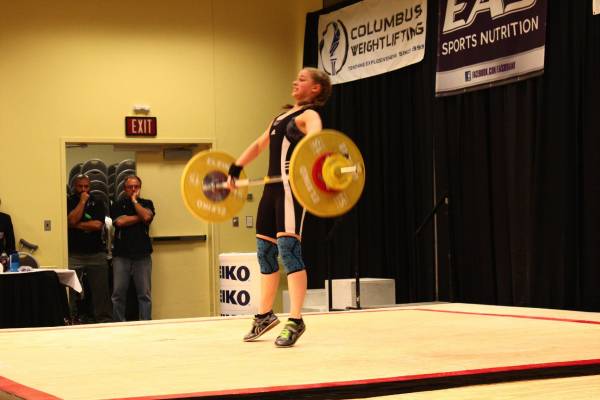Weightlifters are legendary for their vertical jumping abilities, and that may be one of the factors that makes the snatch, clean, and jerk so attractive to strength and conditioning coaches anxious to develop “hops” in their athletes. Some observers, however, have noted that perhaps the lifts weren’t so much the cause of the jumping proficiency as they were symptoms of selected athletes who already had exceptional jumping skill.
It appears both viewpoints are true. Most talented weightlifters are exceptional jumpers and performing the snatch and the clean and jerk properly enhances jumping ability. It is the movement pattern employed by the legs and hips in jumping that is also instrumental in developing great pulling power.
Jumping ability is often a selection factor in the talent identification process for state sponsored weightlifting programs. It has been reported that weightlifters in elite programs are expected to be able to jump, with a countermove, up onto a platform set at nipple height. I’ve personally seen members of the USA weightlifting team jump up to a platform level with the athletes’ clavicles. This ability is partially due to great leg strength and also to a proper extension pattern of the legs and hips.
Those aspiring to improve their weightlifting results need to improve jumping ability, and this is best done early in the athletic development. Jumping movements can be learned and practiced during pre-adolescence, and are of great value for the developing weightlifter. As long as they are not practiced excessively to the point of joint trauma, jumping movements are an extremely valuable component of early athletic development.
Some jumping activities that can be implemented along with the early weightlifting training of pubertal weightlifters include the following:
Jumping Drills:
- Consecutive long jumps with both legs
- Frog jumps going into a full squat between jumps in series of 3 to 8 jumps
- Vertical jumps
- Bounding drills
- Jumping up steps starting with 2 stairs at a time and working up to 4 or 5 (I did this with great success using a staircase of 16 steps) All my lifters could go up at least 3 steps at a jump and some could eventually perform 5.
- Hopping up steps on a single leg starting with single stairs and then increasing to 3 or 4 (My best athletes could go up 4 steps on a single leg in consecutive hops up the 16 step staircase.)
- “running” on a single leg while a partner runs alongside holding the other leg behind
Jumping Games
- Volleyball
- Basketball
- Team Handball
 These activities can be used by pre-adolescents. They can also be added to the training programs of older athletes. They can be performed as part of warm-ups, on non-weightlifting days and to add to the volume of exercise on weightlifting training days. After performing jumping exercises, especially with younger athletes, the coach must take into consideration the degree of fatigue visited on the legs, and how that will affect the performance of weightlifting movements.
These activities can be used by pre-adolescents. They can also be added to the training programs of older athletes. They can be performed as part of warm-ups, on non-weightlifting days and to add to the volume of exercise on weightlifting training days. After performing jumping exercises, especially with younger athletes, the coach must take into consideration the degree of fatigue visited on the legs, and how that will affect the performance of weightlifting movements.
Of course, it goes without saying that optimal form and technique must be employed to derive the greatest benefit from the exercises. They may be engaged in as competitive activities, which will increase enthusiasm and competitive zeal.






